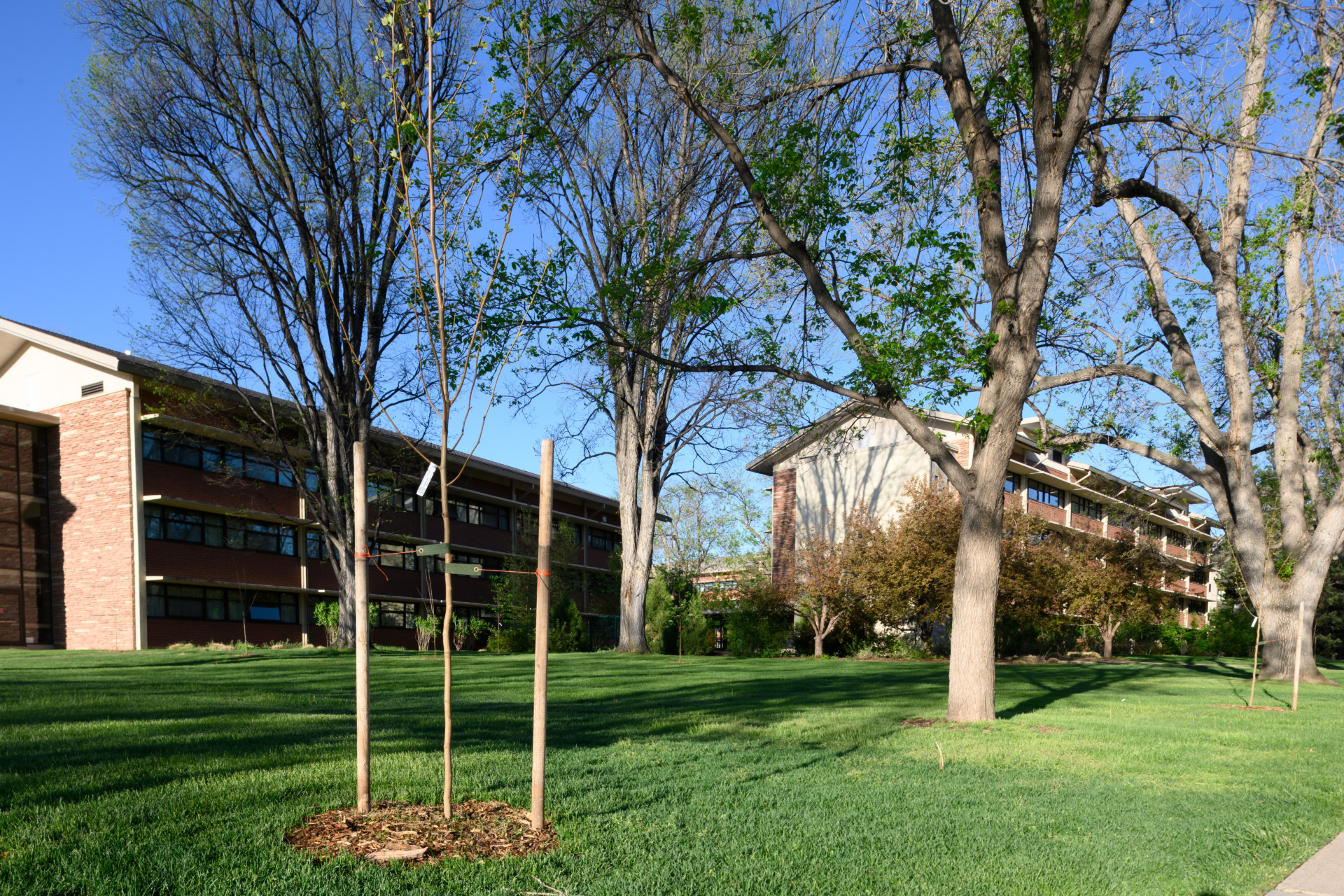
They’re heeeeere! The much dreaded, yet expected, arrival of the pesky little tree killer known as the emerald ash borer has come; the presence of EAB was confirmed in trees north of Fort Collins earlier this month.
Colorado State University experts say they have been preparing for the arrival on its campuses for a decade and have a plan in place to tackle the issue.
Rodney Gillespie, CSU Outdoor Services manager, said the plan is to save the larger trees by treating them with trunk injections, a process that must continue throughout the life of the tree, and to remove trees with trunk diameters of 15 inches or smaller. Removal and replacement will take place over a period of three to six years.
There are approximately 600 ash trees on the main, foothills and south campuses, and about one-third of them are larger than 15 inches in diameter, which means they will be treated and saved.
Those trees that are removed will be replaced by a different variety of tree, the standard practice at CSU.
“We have started removing smaller trees proactively and have planted a diversity of other types of trees,” Gillespie said. “We have already begun shadow planting smaller trees under some ash trees, so when they are removed, it will not be as noticeable.”
Introduced pest
A species of beetle native to northeast Asia, the EAB was introduced to North America sometime during the 1990s. The bug was first discovered in Colorado, in Boulder County, in September 2013. The Colorado State Forest Service announced the arrival of the EAB in Larimer County on Oct. 2, 2019.
EAB attacks and kills all true native North American ash trees, including green, white, black and blue ash, and their cultivars, including the autumn purple ash, a popular white ash variety in Colorado. The half-inch long, dark green adult beetles kill stressed and healthy trees and is so aggressive that ash trees may die within two years after they become infested. It is possible for EAB to infest an ash tree for up to four years before visible signs of decline in the tree occur.
Fred Haberecht, assistant director for CSU Facilities Management and university planner, said knowing that the EAB was headed our way and being able to plan for it, and how to finance treatment or removal of trees, has allowed CSU to be prepared.
“Ten years ago, 15% of our trees were ash trees and now 8% are ashes,” he said. “We have not been caught off guard. Through good stewardship and sound forestry practices, we’re actually in a really good place.”
Resources
Visit the Colorado State Forest Service’s “Green Menace” page to learn more about the insect, forest service efforts to manage the spread of EAB in the state, and how to identify ash trees.
Colorado State University Extension’s website has a number of resources on emerald ash borer, including how to determine if your tree has EAB, identification of insects and ash tree management zones.